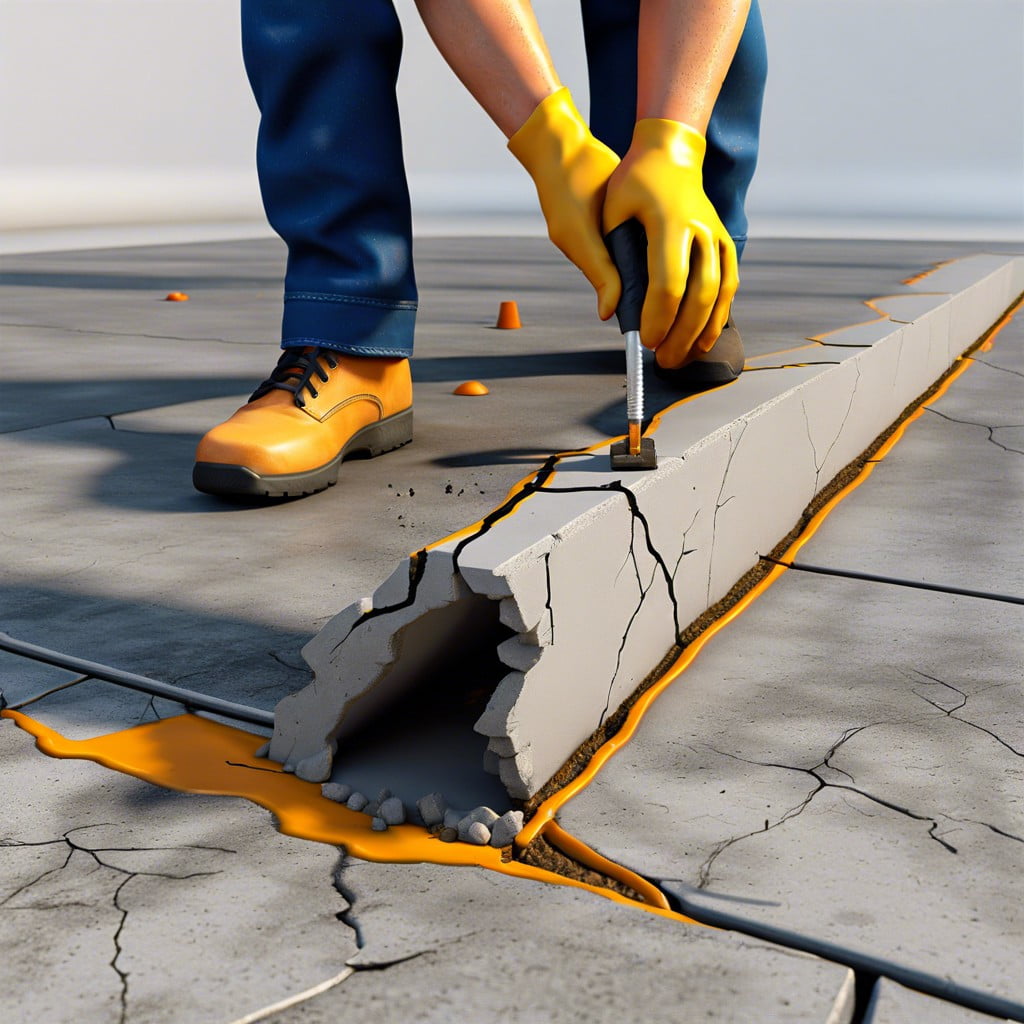Learn how to use Quikrete Polymer Modified Structural Repair for durable and efficient concrete fixes.
Key takeaways:
- Quikrete Polymer Modified Structural Repair is a specialized concrete mix for extensive damage.
- It has enhanced bonding and curing speed for quick return to service.
- The mix resists shrinkage, cracking, and moisture, increasing repair lifespan.
- Proper surface preparation and application ensure optimal results.
- Safety measures, such as protective gear and ventilation, are crucial.
Definition of Quikrete Polymer Modified Structural Repair

Quikrete Polymer Modified Structural Repair is a specialized concrete mixture designed to fix extensive damage in concrete structures. The polymer additives increase the material’s strength and durability, making it ideal for repairs that need to withstand significant loads or environmental stressors. It adheres well to old concrete surfaces, making it a valuable choice for renovation projects. Importantly, this formulation accelerates the curing process, allowing rapid return to service.
This repair mix is typically used in heavy-duty settings, like highways and bridges, as well as in commercial buildings and residential properties where structural integrity is crucial. Its enhanced bonding capabilities prevent further damage by effectively sealing cracks and defects in the infrastructure.
Properties and Benefits
Quikrete Polymer Modified Structural Repair is enhanced with special polymers that improve its bonding capabilities and increase durability. This product sets faster than traditional concrete repairs, allowing quick return to service. It’s not your average mix; its high strength formula can withstand heavy loads, making it ideal for fixing vital structural components such as bridges, roads, and building walls.
Unlike plain concrete, this repair material is designed to resist shrinkage and cracking, significantly extending the lifespan of the repair. It’s also water-resistant, which prevents further damage in areas exposed to moisture. This feature proves invaluable in outdoor or wet environments, stopping weather and water from dictating the longevity of your structure’s integrity.
So, think of it as your go-to fixer-upper that doesn’t shy away from heavy-duty repairs and adverse conditions. A true ally against the elements and wear, ensuring your repairs stand the test of time with less maintenance required.
Preparation and Application Guidelines
Before starting your project with Quikrete Polymer Modified Structural Repair, ensure the surface is clean and free from any loose debris or oil stains. Moistening the area slightly can improve the product’s adhesion.
Mix the concrete repair material according to the instructions on the package. Typically, you’ll need a specific ratio of water to powder. Mix thoroughly until you achieve a uniform, lump-free consistency.
Apply the mixture using a trowel or putty knife, pressing firmly to ensure good contact with the substrate. Smooth the surface as you go to match the surrounding area. For deeper repairs, apply in layers, allowing sufficient drying time between each layer as recommended by the manufacturer.
Cure the repaired area by keeping it moist for a specified period. This can involve covering the surface with a plastic sheet or periodically misting with water. This step is crucial as it helps the repair material to achieve optimal strength and durability.
Common Challenges and Solutions
Applying the material in colder weather can prove tricky. The cooler temperatures can extend curing time or even prevent proper adhesion. A helpful workaround is to warm the repair area prior to application and maintain a moderate temperature until the material has set.
Moisture also plays a disruptive role. It’s crucial that surfaces are dry before beginning repairs. A simple yet effective solution is to apply a temporary shelter over the repair site to shield it from rain or dew until the material has fully cured.
Another common hiccup is improper mixing, which can lead to weak or inconsistent repairs. Always follow the mixing instructions accurately. To make life easier, consider using a power mixer to ensure the components blend thoroughly.
By addressing these challenges with smart, practical solutions, the application process will be much smoother and the results more reliable.
Safety Measures for Handling and Application
Always wear protective gear, such as gloves and safety glasses, to shield against skin irritation and eye damage. This material can be harsh on bare skin and dangerous if it contacts the eyes.
Ensure the work area is well-ventilated. Quikrete emits fumes that can be harmful if inhaled in enclosed spaces. Open windows or use a fan to maintain fresh airflow.
Follow the mixing instructions precisely. Incorrect ratios can not only weaken the structural integrity of the repair but also create unpredictable chemical reactions.
Dispose of any unused material properly. Hardened concrete can be disposed of as regular waste, but always check local regulations for specific disposal instructions of chemical residues.
By sticking to these safety protocols, you’ll make your project safer and more effective.
Recap




